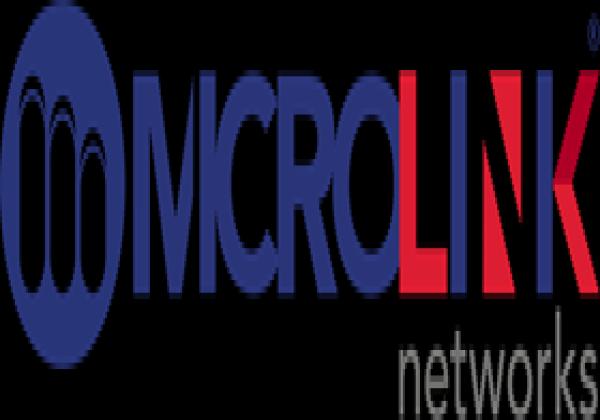Fiber Adapters&Couplers Suppliers in Dubai,UAE

IFMEA
Phone: +97143296764
Emirate:Dubai, P.O.BOX:
Address:Dubai Branch : GF-01, Shams Business Park AL Garhoud , Dubai

Micronet Technology
Phone: 0505648497
Emirate:Dubai, P.O.BOX:182415
Address:Office 102, Rifa Old Building, Opp Palm Beach Hotel, Khalid Bin Waleed St, Bur Dubai

LAN GUARD
Phone: +971 2 6329170
Emirate:Abu Dhabi, P.O.BOX:
Address:M01 Floor, Princess Jewellery Building, Khaleefa Street, Abu Dhabi, United Arab Emirates

Microlink networks llc
Phone: +97145561557
Emirate:Dubai, P.O.BOX:
Address:Boulevard Plaza Tower One, Level 3, Downtown Dubai, United Arab Emirates

Bits Secure IT Infrastructure LLC
Phone: +971 43282444
Emirate:Dubai, P.O.BOX:3282444
Address:SUNTECH Tower - Office 903 - Dubai Silicon Oasis - Industrial Area - Dubai - United Arab Emirates
Fiber adapters and couplers are essential components used in fiber optic networks to connect, terminate, and manage fiber optic cables. They play a crucial role in facilitating signal transmission between different types of connectors, equipment, and network segments.
Key Differences:
Function:
Adapters: Primarily used to join two fiber optic cables with different connector types (e.g., SC to LC) or genders (male to female).
Couplers: Combine multiple fiber optic cables into a single output, typically used for splitting or combining signals.
Number of ports:
Adapters: Typically have two ports, one on each end, for connecting two cables.
Couplers: Can have multiple ports (e.g., 2x1 coupler, splitting one input into two outputs) depending on their specific function.
Types of Fiber Adapters and Couplers:
Simplex adapters: Connect two individual fiber optic cables
Duplex adapters: Connect two pairs of fiber optic cables (two simplex connections within one housing).
Multiplex couplers: Combine or split multiple fiber optic cables, offering various configurations depending on the application.
Benefits of Using Fiber Adapters and Couplers:
Versatility: Enable connections between different connector types and equipment, facilitating network flexibility and adaptability.
Cost-effectiveness: Provide a more economical solution compared to replacing entire cable assemblies when needing to change connector types.
Signal management: Facilitate splitting or combining signals for various applications, such as testing, monitoring, or redundancy.
Ease of use: Typically require simple snap-in or screw-on installation, offering convenient deployment and maintenance.
Choosing the Right Fiber Adapters and Couplers:
Connector types: Ensure compatibility between the adapter/coupler connectors and the fiber optic cables and equipment you are using (e.g., SC, LC, ST).
Mode (single-mode vs. multi-mode): Select components compatible with the type of fiber optic cable you are using.
Polish type (PC, UPC, APC): Choose the appropriate polish type based on your network's requirements to minimize signal reflection and loss.
Number of ports: Select adapters or couplers with the required number of ports to accommodate your specific connection needs.
Additional Considerations:
Quality: Opt for high-quality adapters and couplers from reputable manufacturers to ensure reliable performance and minimal signal loss.
Dust caps: Use dust caps on unused ports to prevent contamination and maintain optimal performance.
Key Differences:
Function:
Adapters: Primarily used to join two fiber optic cables with different connector types (e.g., SC to LC) or genders (male to female).
Couplers: Combine multiple fiber optic cables into a single output, typically used for splitting or combining signals.
Number of ports:
Adapters: Typically have two ports, one on each end, for connecting two cables.
Couplers: Can have multiple ports (e.g., 2x1 coupler, splitting one input into two outputs) depending on their specific function.
Types of Fiber Adapters and Couplers:
Simplex adapters: Connect two individual fiber optic cables
Duplex adapters: Connect two pairs of fiber optic cables (two simplex connections within one housing).
Multiplex couplers: Combine or split multiple fiber optic cables, offering various configurations depending on the application.
Benefits of Using Fiber Adapters and Couplers:
Versatility: Enable connections between different connector types and equipment, facilitating network flexibility and adaptability.
Cost-effectiveness: Provide a more economical solution compared to replacing entire cable assemblies when needing to change connector types.
Signal management: Facilitate splitting or combining signals for various applications, such as testing, monitoring, or redundancy.
Ease of use: Typically require simple snap-in or screw-on installation, offering convenient deployment and maintenance.
Choosing the Right Fiber Adapters and Couplers:
Connector types: Ensure compatibility between the adapter/coupler connectors and the fiber optic cables and equipment you are using (e.g., SC, LC, ST).
Mode (single-mode vs. multi-mode): Select components compatible with the type of fiber optic cable you are using.
Polish type (PC, UPC, APC): Choose the appropriate polish type based on your network's requirements to minimize signal reflection and loss.
Number of ports: Select adapters or couplers with the required number of ports to accommodate your specific connection needs.
Additional Considerations:
Quality: Opt for high-quality adapters and couplers from reputable manufacturers to ensure reliable performance and minimal signal loss.
Dust caps: Use dust caps on unused ports to prevent contamination and maintain optimal performance.


